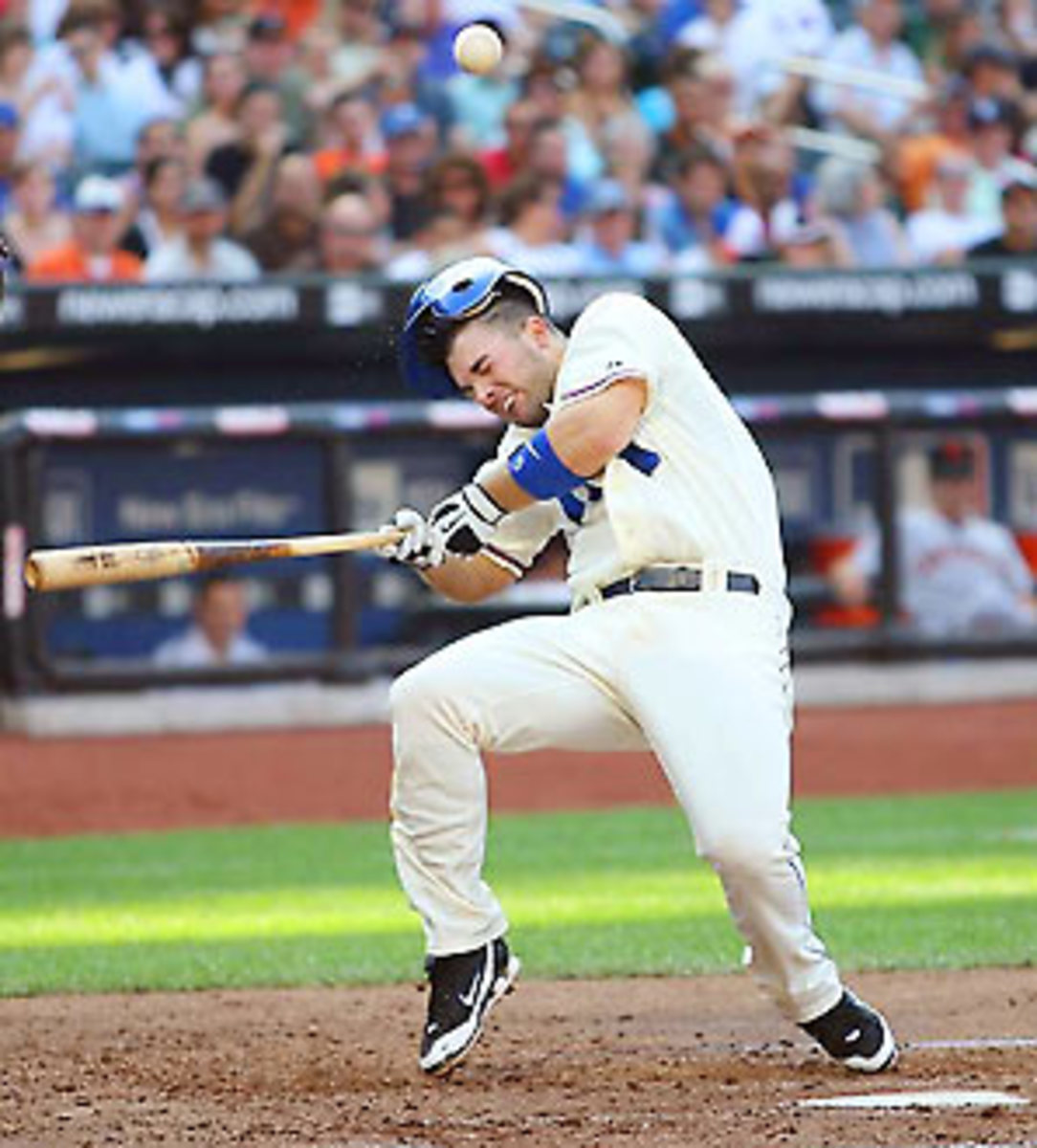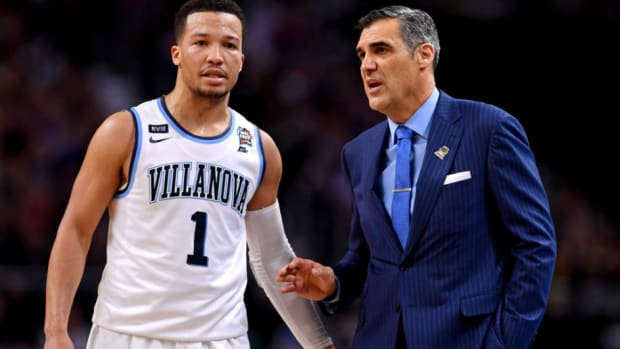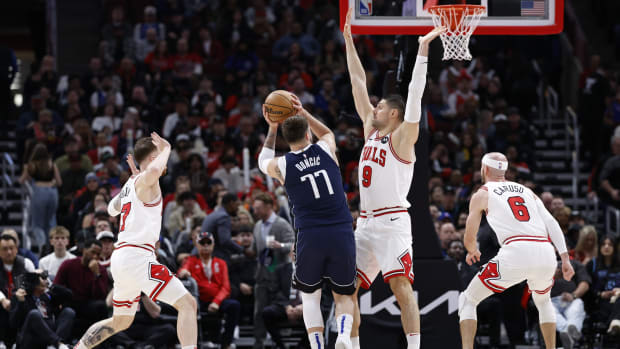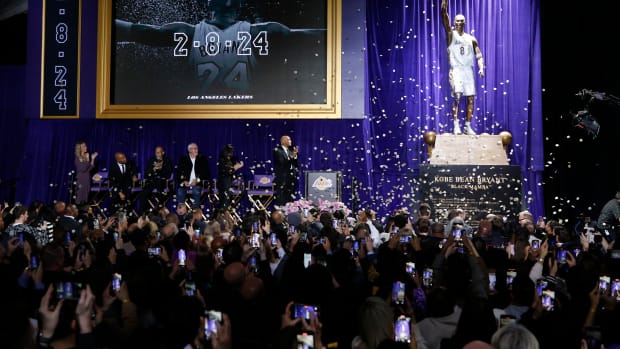MLB needs to curb macho culture that has taken root in today's game
The subsequent pitch triggered another episode in what is seriously and dangerously wrong about the way baseball is played these days. Cain threw a 94 mph fastball up and in. Wright hardly moved from its path. The ball smacked square off the side of his helmet, just above the ear hole.
Was Cain trying to hit Wright? Of course not, not with a runner already on base and no outs in a 0-0 game. Cain was visibly shaken by the violence of the impact. No matter. The Mets were going to retaliate -- for an accidental beaning. And that's where baseball is going scarily off the tracks: a vigilante culture has taken root in which teams are retaliating even when it was obvious that a pitcher wasn't trying to hit a batter.
Memo to commissioner Bud Selig, discipline czar Bob Watson and especially to major league players: It's time to knock off the punkish stuff in which every hit by pitch becomes a challenge to your manhood. One of the most dangerous eras in baseball history could become even more dangerous.
"It's getting out of hand," Giants manager Bruce Bochy said. "Every time somebody gets hit they think it's on purpose and they're going to retaliate.
"It seems these things go in cycles. And it seems it's getting to the point where teams have a short fuse. It's becoming a macho thing. It's probably going to continue for a while.
"Obviously, you get your core player hit you feel like you have to do something. It's over. [But] it's going to get ugly at some point."
Of course, Santana wouldn't rest until he hit someone in "retaliation." He buzzed the tower of Pablo Sandoval twice in the seventh, with one of his fastballs actually whizzing behind his back. But he missed both times (and Sandoval proceeded to belt a deep home run on the very next pitch), so he kept trying -- even after umpire Brian O'Nora warned both sides. Santana took aim at the next batter, Bengie Molina, which is akin to hitting the broad side of a barn. This time he didn't miss. Amazingly, O'Nora didn't even toss Santana. Apparently Santana would have had to have grabbed the public address microphone and actually announced his intent to hit Molina for O'Nora to actually enforce his own warning.
In today's game, that act of "retaliation" made Santana a tough cookie. You know, "protecting" and "standing up for" his teammate, and whatever other code words for this pseudo-macho game players want to invent. Must every hit by pitch set off alarms? The umpires get antsy. The crowd starts buzzing and wonders who will get hit next. (Star for star? Number three hitter for number three hitter? First baseman for first baseman? Ugh.) And everybody wants to get into the head of the pitcher to decipher why he was trying to hit the batter.
After the game Saturday, Molina, a 12-year veteran, shook his head in disgust about the way the code of the game has deteriorated.
"That's what's wrong about it," Molina said when asked about how retaliation has become virtually automatic even for accidental hit-by-pitches. "The game has changed lately. If you hit somebody, even if it's not on purpose, they come back and hit somebody. You have to be professional, take the hit and go to first.
"Yeah, it's changed a lot. But you can do nothing about it. Just keep going."
Look at the nonsense that happened at Fenway Park between the Tigers and Red Sox. Detroit first baseman Miguel Cabrera got hit by a pitch that was very nearly over the inside corner of home plate, and the Tigers have to buzz Cabrera's Boston counterpart, Victor Martinez. And then Kevin Youkilis, a classic diver, overreacts to getting hit in the back, charging the mound and lamely throwing his helmet at pitcher Rick Porcello.
Listen to all the rhetoric. White Sox manager Ozzie Guillen promised to hit people at a rate of two-for-one if his players keep getting hit -- even though Sox first baseman Paul Konerko admitted "at no time did I think I was getting hit on purpose." Guillen's punishment for such threats? Nothing.
Likewise, pitchers Bobby Jenks and Matt Garza openly admitted to throwing at hitters at purpose -- and neither one of them was suspended. Hello, Watson? Anybody home?
Baseball keeps letting this macho bunk go unchecked. So what we wind up with is this typical scenario: star player gets hit by a pitch (often accidentally), and star player's pitching staff feels obligated to hit one of theirs. And if his team doesn't take out one of theirs, the star player whines that his teammates don't protect him. Hanley Ramirez of the Marlins went that route this year. Chad Billingsley of the Dodgers was demeaned last year for not "retaliating" against the Phillies in the NLCS after teammate Manny Ramirez was hit.
How did we get here? Part of the problem is that umpires are asked all the time to decipher intent -- did the pitcher just throw at the guy on purpose? -- and to keep the peace they often err on the side of thinking a pitcher did it on purpose. Players then take that "reading intent" game one step further.
Another problem is the modern hitting style of "diving" into pitches, typified by Derek Jeter leaning toward the plate as he swings. Such a style often puts the hitter's hands and head closer to the inside the corner and in harm's way.
Yet another problem is the body armor worn by classic "divers." Hitters can hang their arms and elbows near the plate with impunity because they wear protective gear. I can't think of an equipment change over the past quarter century that has had a bigger impact on how the game is played, and yet baseball never has addressed the issue, other than to offer some size restrictions on the gear. For years I have advocated a more meaningful rule to address the body armor: you can wear the stuff, but if the pitch hits you on one of those elbow or arm guards, you are not awarded first base. The pitch simply is counted as a ball.
Finally, yet another problem is that as expansion and specialized relief pitching has brought hundreds and hundreds more pitchers into big league games, many of them don't have the kind of command to pitch inside for effect without occasionally hitting somebody. In the days of umpire Eric Gregg and the 28-inch-wide plate, pitchers didn't bother much with going inside because they could get strikes called two balls off the outside corner. With the onset of QuesTech and other pitch tracking services, the strike zone has become more uniform with the width of the plate, making it imperative that pitchers use both sides. The more inside pitches, the more inexperienced pitchers, the more hit batters.
And so we are left with a game in which a batter today is about 40 percent more likely to get hit by a pitch than 50 years ago. Here is a look at the average number of plate appearances per hit batter in 10-year increments, starting with 1959 (remember, the lower the plate appearances per hit batter, the more dangerous the climate):
Whoa, it's rather dangerous out there, boys, especially as compared to 30 or even just 20 years ago -- even if the rate of hit batters has declined a little bit this decade. Here is the short-term view:
Every year, thanks to several rounds of expansion and control issues, about 1,000 more batters get hit today than got hit in 1959. That's 1,000 more opportunities to "prove your manhood" by hitting somebody else. On and on we go.
Actually, back in 2001, when guys were hit more often than they are today, I don't remember this vigilante nonsense going on, when every hit batter caused this kind of alarm. These are dangerous times. Bochy is right. The macho stuff is getting out of hand.
RELATED CONTENT:
• POSNANSKI:Beanballs on a historic rise• KEITH:Sadly, beanballs are here to stay• GALLERY:Recent beanball incidents



































